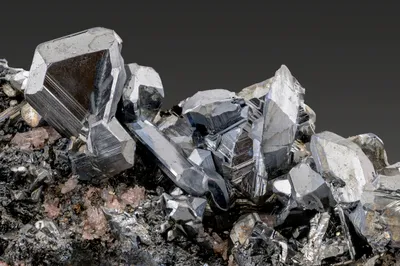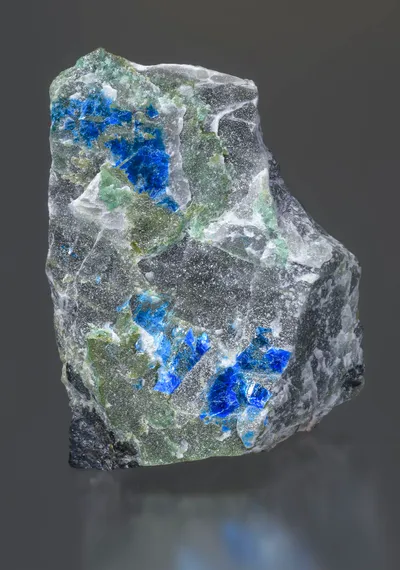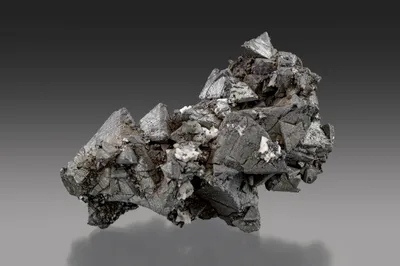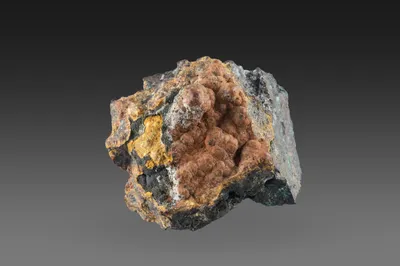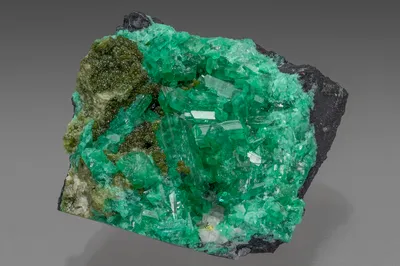Mineral Species
Fahleite
Type Locality
Yes
Composition
CaZn5Fe3+2(AsO4)6·14H2O
Crystal System
Orthorhombic
Status at Tsumeb
Confirmed (type locality)
Abundance
Extremely rare
Distribution
Second (?) or third (?) oxidation zone
Paragenesis
Supergene
Entry Number
Species; TSNB125
Type Mineralogy
Fahleite, IMA 1982-061, is the Co- and Ni-free zinc analogue of smolianinovite. Minute yellow fibres of an unknown mineral had been observed on several specimens of "… deeply oxidised ores from the deeper oxidation zone" at Tsumeb in the early 1980s but with insufficient material for a full characterisation. A more substantial specimen with bundles of "… straw-yellow to grey or very bright green" fibrous crystals (to 10 mm) was made available by German mineral dealer Ralph Fahle after whom the new mineral was subsequently named (Medenbach et al. 1988). Type material is conserved at the Institut für Mineralogie, Ruhr-Universität, Bochum, Germany.
General Notes
On the type specimen, fahleite occurs as straw-yellow, grey or bright green fibrous crystals to 10 mm, associated with gypsum, lavendulan, cuprian adamite [= zincolivenite], conichalcite, tsumcorite and calcite on a tennantite-chalcocite ore; fahleite appears to be the youngest mineral in this paragenesis (Medenbach et al. 1988).
Since the description of the type material, another habit of "fahleite" has been discovered, as green, glass-like fragments (resembling the unknowns GS1 and GS2 of Gebhard, 1999). Microprobe analysis confirms that some of these specimens share the fahleite composition, but it has yet to be shown that the material is structurally equivalent. Notably, however, fahleite (and smolianinovite) yield poor XRD patterns with only a few broad and diffuse reflections (Medenbach et al. 1988).
Associated Minerals
calcite; chalcocite; conichalcite; gypsum; lavendulan; quartz; tennantite-(Zn); tsumcorite; zincolivenite
